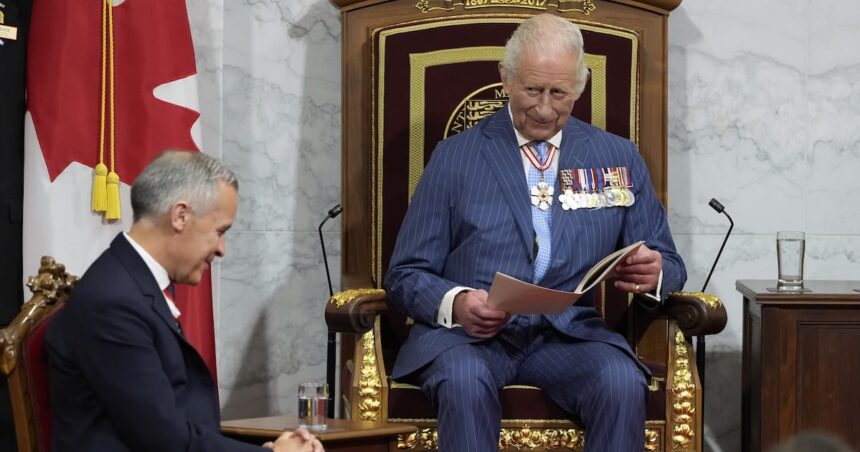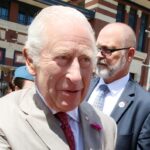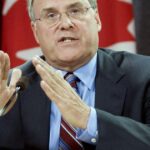In an unprecedented moment that bridged centuries of constitutional tradition with modern governance challenges, King Charles III delivered Canada’s Speech from the Throne Tuesday—not physically present in Ottawa’s Senate chamber, but through a historic digital projection that marked both innovation and continuity in Commonwealth relations.
The monarch’s address, presented via recorded video and representing his first direct involvement in Canadian parliamentary proceedings since ascending to the throne, outlined Prime Minister Justin Trudeau’s government priorities while setting several constitutional precedents in Canada’s parliamentary democracy.
“As we look to the future, we must confront the challenges that face us with resolve and purpose,” the King stated in his recorded message, his image projected above the Senate Speaker’s chair where he would traditionally sit. “Canada stands as a beacon of stability and progress in uncertain times.”
The speech reflected the Liberal government’s focus on economic recovery, housing affordability, healthcare improvement, and climate action—themes that have dominated Canadian politics amid post-pandemic economic pressures and growing public concerns about living costs.
Royal historian Dr. Elizabeth Morgan told CO24: “This digital delivery represents more than just pandemic-era adaptation—it’s a significant evolution in how the Crown exercises its constitutional functions in modern Canada. The monarchy is demonstrating remarkable institutional flexibility while maintaining essential ceremonial continuity.”
The address highlighted specific legislative priorities including a proposed cap on international student visas, increased housing construction targets, and enhanced healthcare funding—issues that have generated intense debate in Canadian news circles in recent months as the Trudeau government faces mounting public pressure on affordability issues.
Opposition leaders offered mixed reactions. Conservative Leader Pierre Poilievre criticized the speech as “recycled promises without concrete action,” while NDP Leader Jagmeet Singh acknowledged some positive directions but questioned “whether these commitments will translate into meaningful change for struggling Canadians.”
Constitutional experts note that while the monarch’s role in Canadian governance remains largely ceremonial, this digital delivery could have lasting implications for royal involvement in Canada’s political processes. Professor James Bowden of Queen’s University observed: “We’re witnessing the modernization of constitutional monarchy in real-time—maintaining the essential framework while adapting its expression to contemporary realities.”
The throne speech comes amid broader discussions about Canada’s constitutional future and the monarchy’s role within it—questions that have gained increased attention following Queen Elizabeth II’s passing and throughout early years of King Charles’s reign.
For many Canadians watching the address, the substantive policy directions may ultimately matter more than the delivery method. The speech’s emphasis on housing affordability resonates with millions facing a challenging real estate market, while healthcare funding promises speak to persistent concerns about medical system capacity following pandemic strains.
“The true test of any throne speech isn’t its historical significance but whether its promises translate into tangible improvements in citizens’ lives,” noted political analyst Maria Chen in an analysis for CO24 News. “Canadians will judge this government not on constitutional innovation but on delivering results on housing, healthcare, and economic security.”
As Parliament begins its new session, the question remains: will this technologically innovative throne speech lead to equally innovative policy solutions for the complex challenges facing Canadians today?

























